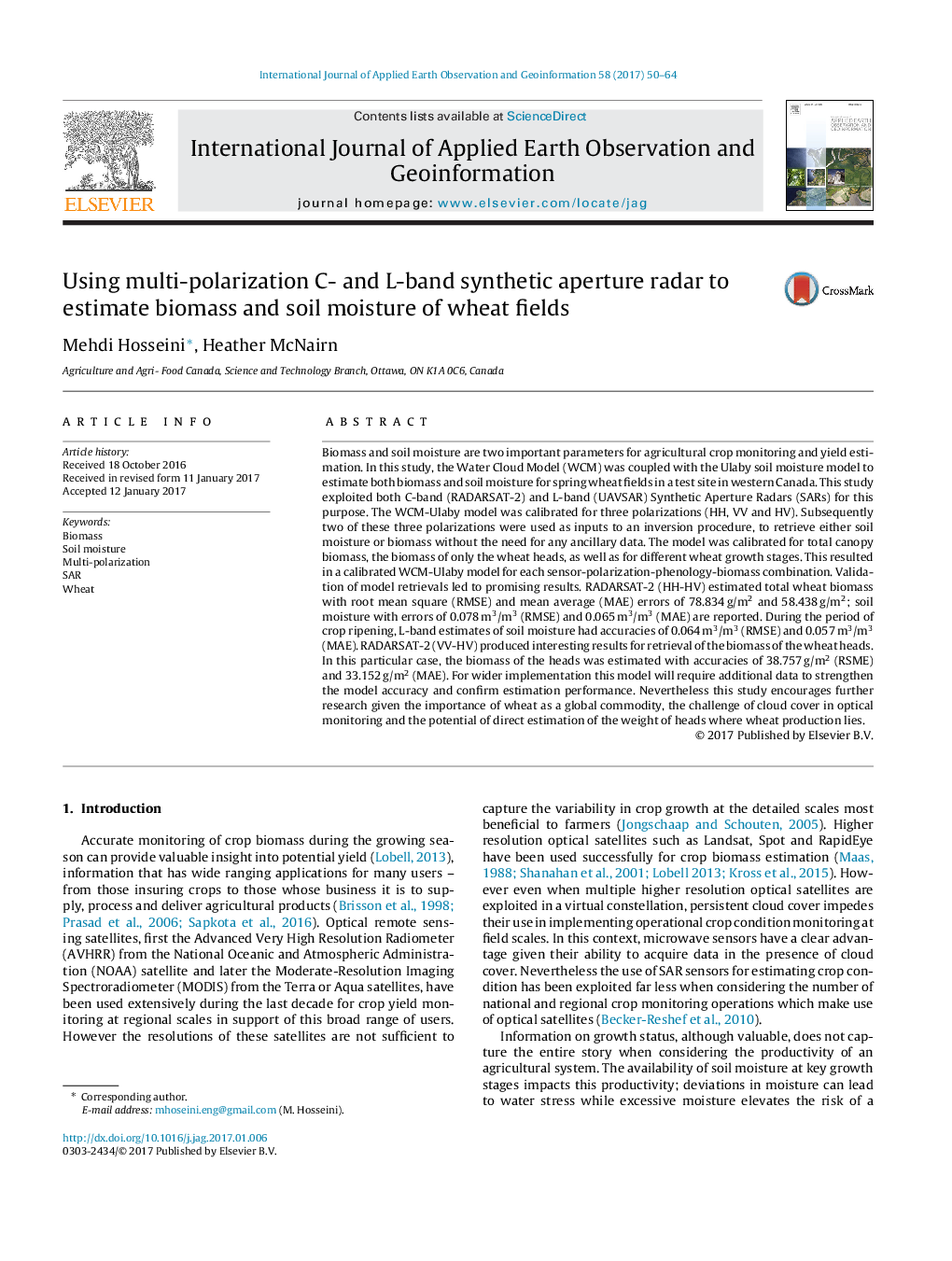| Article ID | Journal | Published Year | Pages | File Type |
|---|---|---|---|---|
| 5755446 | International Journal of Applied Earth Observation and Geoinformation | 2017 | 15 Pages |
Abstract
Biomass and soil moisture are two important parameters for agricultural crop monitoring and yield estimation. In this study, the Water Cloud Model (WCM) was coupled with the Ulaby soil moisture model to estimate both biomass and soil moisture for spring wheat fields in a test site in western Canada. This study exploited both C-band (RADARSAT-2) and L-band (UAVSAR) Synthetic Aperture Radars (SARs) for this purpose. The WCM-Ulaby model was calibrated for three polarizations (HH, VV and HV). Subsequently two of these three polarizations were used as inputs to an inversion procedure, to retrieve either soil moisture or biomass without the need for any ancillary data. The model was calibrated for total canopy biomass, the biomass of only the wheat heads, as well as for different wheat growth stages. This resulted in a calibrated WCM-Ulaby model for each sensor-polarization-phenology-biomass combination. Validation of model retrievals led to promising results. RADARSAT-2 (HH-HV) estimated total wheat biomass with root mean square (RMSE) and mean average (MAE) errors of 78.834Â g/m2 and 58.438Â g/m2; soil moisture with errors of 0.078Â m3/m3 (RMSE) and 0.065Â m3/m3 (MAE) are reported. During the period of crop ripening, L-band estimates of soil moisture had accuracies of 0.064Â m3/m3 (RMSE) and 0.057Â m3/m3 (MAE). RADARSAT-2 (VV-HV) produced interesting results for retrieval of the biomass of the wheat heads. In this particular case, the biomass of the heads was estimated with accuracies of 38.757Â g/m2 (RSME) and 33.152Â g/m2 (MAE). For wider implementation this model will require additional data to strengthen the model accuracy and confirm estimation performance. Nevertheless this study encourages further research given the importance of wheat as a global commodity, the challenge of cloud cover in optical monitoring and the potential of direct estimation of the weight of heads where wheat production lies.
Related Topics
Physical Sciences and Engineering
Earth and Planetary Sciences
Computers in Earth Sciences
Authors
Mehdi Hosseini, Heather McNairn,
